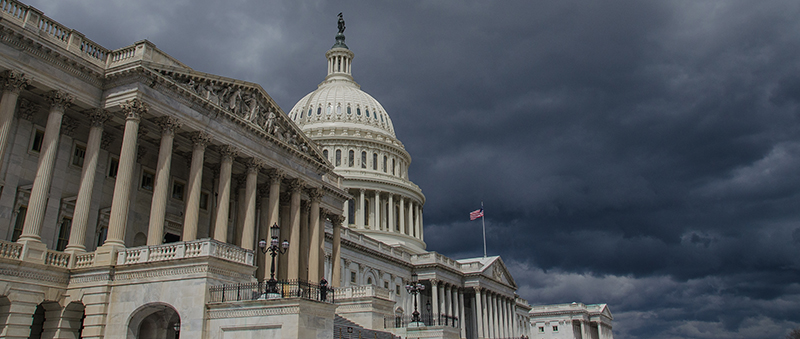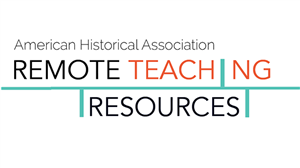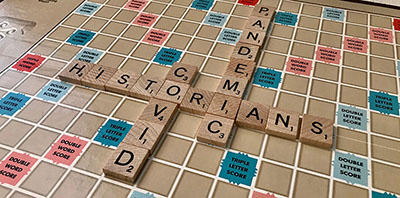
The Assault on the Capitol in Historical Perspective: Resources for Educators
Published on January 7, 2021
We know teaching the events of January 6, 2021—which are not a “moment,” but the product of a long history—presents a familiar, yet unusually urgent, challenge: how can students use historical knowledge and thinking to understand current crises? Here are some resources that might help.
Please note that this is not intended to be an exhaustive list. For the original Twitter thread listing these resources, please click here.
The AHA issued a statement condemning “the actions of those who, on January 6, stormed the United States Capitol, the seat of the nation’s legislature, the heart of its democratic form of governance.” The AHA deplores the “inflammatory rhetoric of all the political leaders who have refused to accept the legitimacy of the results of the 2020 election and thereby incited the mob.”
Contextualizing Violence
- “Violence in Political History: The Challenges of Teaching About the Politics of Power and Resistance” by Kellie Carter Jackson (Perspectives on History, 2011)
- “‘Far Worse Than Nixon’”" by Colleen Flaherty (Inside Higher Ed, 2020)
- “The Violence at the Heart of Our Politics” by Joanne B. Freeman (The New York Times, 2017)
- “Yes, Political Rhetoric Can Incite Violence” by Nathan Kalmoe (Politico, 2018)
- “Pulling Our Politics Back from the Brink” by Evan Osnos (The New Yorker, 2020)
- #CharlestonSyllabus (Chad Williams, Kidada E. Williams, Keisha N. Blain, Melissa Morrone, Ryan P. Randall, Cecily Walker) includes a list of readings to support conversations in the classroom about the history of race relations and racial violence in the US.
- “What Do We Mean by Populism? The ‘Second’ Klan as a Case Study” by Linda Gordon (Perspectives on History, 2017)
- AHA Statement on the History of Racist Violence in the United States (American Historical Association, 2020)
- A Bibliography of Historians’ Responses to COVID-19 — Race & Health: This section addresses current and historical public health crises within the context of xenophobia, racism, and racial inequity. Use the linked Zotero Library to find more specific topics (American Historical Association, 2020)
- “Teaching the History of Racist Violence in the High School Classroom,” a Virtual AHA webinar featuring Reginald K. Ellis, Tina L. Heafner, and Jacqueline Jones (YouTube, 2020)
- “Erasing History or Making History? Race, Racism, and the American Memorial Landscape,” a Virtual AHA webinar featuring David W. Blight, Annette Gordon-Reed, and James Grossman (YouTube, 2020)
- Historians on the Confederate Monument Debate: this bibliography includes statements, op-eds, interviews, and other media conversations about the importance of historical thinking and knowledge within debates over Confederate monuments. (American Historical Association, 2017)
Elections
- “On the Peaceful Transfer of Power: Lessons from 1800” by Sara Georgini (Perspectives on History, 2020)
- “’If Anybody Says Election to Me, I Want to Fight’: The Messy Election of 1876” by Jon Grinspan (Perspectives on History, 2020)
- “The Senators Who Were Expelled After Refusing to Accept Lincoln’s Election” by Gillian Brockell (The Washington Post, 2020)
- “So Far Away from 1965: Voting Rights in the United States” by Julian Zelizer (Perspectives on History, 2020)
- “A Remarkable Election” by Jacqueline Jones (Perspectives on History, 2009)
- “Historians Reflect on the 2020 Election,” a Virtual AHA webinar featuring Marsha E. Barrett, Jelani Cobb, John A. Lawrence, Heather Cox Richardson, and James Grossman (YouTube, 2020)
General US History
- New American History explores America's past. Projects include American Panorama, an interactive digital atlas, and Bunk History, a shared home for online writing and thinking about the American past.
- The Gilder Lehrman Institute of American History offers a vast array of primary and secondary sources as well as an extensive catalog of teaching resources, including videos, curricula, lesson plans, and activities.
- Retro Report offers lesson plans that include questions for discussion, essay prompts, and a 5-15 minute video.
- U.S. History Scene is a multimedia history education website dedicated to providing students and teachers with easy access to digital resources, live digital curriculum, and cutting-edge history scholarship.
- Mapping American Social Movements produces and displays free interactive maps showing the historical geography of dozens of social movements that have influenced American life and politics since the late 19th century.
- White House Historical Association: Protest at the People’s House offers a collection of research articles and photographs and organizes events into themes.
International Context and Comparisons
Analogies are often invoked to create false historical precedents to create legitimacy. When the Capitol grounds were cleared, members of the crowd started chanting “Tiananmen Square”—an inaccurate analogy. Others have argued that a more appropriate analogy might be the Beer Hall Putsch (Munich, 1923.) The resources below can be used to begin discussions in a comparative context.
- Asia For Educators includes resources on Tiananmen Square.
- Making the History of 1989: The Fall of Communism in Eastern Europe examines intersecting developments that led to the collapse of Communist regimes in 1989.
- Teaching Chile's Road to Socialism: Topics, Questions, and Assignments offers an engaging, interactive approach to teaching about Chile's peaceful transition to socialism and the powerful domestic and international challenge to President Salvador Allende and the Popular Unity.
- EuroDocs' Germany: National Socialism and World War II includes textual, visual, and material sources on German history.
- 1917: Digital Resources on the Russian Revolution includes links to texts, images, video, films, and audio.
- Liberté, Égalité, Fraternité: Exploring the French Revolution offers rich resources for student reading and research. The site's essay topics include the social causes of the French Revolution, a close look at the connection to and unfolding of the Haitian Revolution, and the global legacies of the revolution.
- Haiti and the Atlantic World: Sources and Resources for Discussions about Haiti and the Haitian Revolution encourages discussion about Haiti's founding documents and their influences on the broader Atlantic.
- Teaching Revolutions includes short reflections and essays on teaching the history of revolutions. It includes suggestions for incorporating discussion and debate, visual and cultural analysis, and Reacting to the Past (RTTP).
Remote Teaching Resources

The AHA’s Remote Teaching Resources compiles materials and tools to help historians develop courses and teach remotely in online and hybrid environments.
A Bibliography of Historians' Responses to COVID-19
 The AHA is compiling a professionally vetted bibliography of historians’ responses to COVID-19 as a resource for the public, teachers, and scholars seeking historical perspectives on the current crisis and its local and global impacts. The bibliography includes commentary and publications by historians in both scholarly and popular periodical literature; recorded lectures and webcasts; and digitized primary source materials from past epidemics and pandemics. In amassing these references, the AHA seeks to provide a space where anyone, regardless of expertise, can find digital historical material relevant to the COVID-19 crisis.
The AHA is compiling a professionally vetted bibliography of historians’ responses to COVID-19 as a resource for the public, teachers, and scholars seeking historical perspectives on the current crisis and its local and global impacts. The bibliography includes commentary and publications by historians in both scholarly and popular periodical literature; recorded lectures and webcasts; and digitized primary source materials from past epidemics and pandemics. In amassing these references, the AHA seeks to provide a space where anyone, regardless of expertise, can find digital historical material relevant to the COVID-19 crisis.
History Behind the Headlines

History Behind the Headlines is a webinar series featuring prominent historians discussing the history behind current events. Webinars in this series are generously sponsored by AHA member Jared Brubaker.
